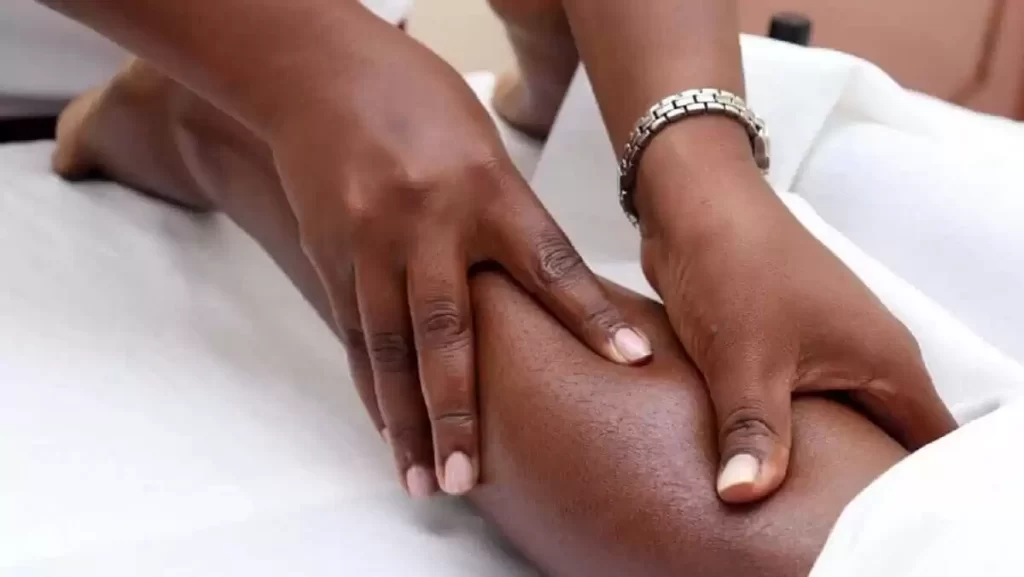
After reading this post, you will know why a massage would hurt, be able to tell the difference between nasty pain that might be a side-effect of massage therapy, and ugly pain that is just abusive, and what to do if you experience pain during a massage treatment.
On this page
Possible cause of pain during massage
- At certain times during the massage, you may feel some discomfort or pain as the massage therapist works on areas where there are adhesions or scar tissue.
- Other times, your body may tense up in response to pressure. Too much force will make muscle molecules cling together and almost harden and painful. The therapist should adjust the technique or further prep the tissues if the superficial muscles are tense. Gritting your teeth under the pressure of too-intense massage only adds to your body’s tension, further hardening those muscles that desperately need to soften.
Effect of pressure threshold on pain
A massage should make you feel better; physically, mentally, and emotionally. Too much force will make muscle molecules cling together and almost harden, but by applying a slower force, the tissues easily slip apart allowing the muscle molecules to open, soften, and separate.



It is hard for clients to tell the difference between nasty pain that might be a necessary part of therapy, and ugly pain that is just abusive. Note that;
- The pressure that would be quite comfortable for one person, would certainly cause severe pain and emotional distress in another.
- Pressure differences occur between body parts. Pressures that worked well on the back can prove to be disastrously intense in the lower legs.
- Pressure tolerance changes with time, the pressure that seemed fine on Tuesday can feel brutal on Friday.
How to avoid/deal with pain
Many people misconstrue pain and soreness as evidence that a massage is working. Here are two things you can do to make your massage treatment more pleasant;
- Communicate with your massage therapist. If you’re feeling real pain during or after your massage, talk to your therapist about adjusting their technique. The goal is to apply just the right amount of pressure to kick-start that relaxation response, loosen and lengthen your muscles, and release tension rather than add to it. This helps you feel good both during and after your session.
- Be relaxed. Ensure the surroundings are comfortable and pleasant.
- The room should have an ambient temperature.
- I prefer soft scents that aren’t very overpowering. But, it’s completely up to you.
- Although, we all have different preferences I play something that should make you relaxed. I pair it with some soft, soothing music in the background. I usually go for the sounds of nature. Think of birds chirping, winds blowing, and at certain times waves crashing.


Closing remarks
Regardless of all other considerations, a massage therapist must talk to you about pressure, respect your preferences (this is more important than any treatment ideology), and be careful about stumbling into areas that need much less pressure (for comfort) or much more pressure (for satisfaction).

And if the therapist isn’t communicative, respectful, and cautious, be ASSERTIVE! Politely demand the pressure you want.

Are you experience muscle tension, pain, and/or aches? Or do you just need to relax?
If so, please schedule your massage appointment now and we will come to your home, office, or other preferred location and do what we do best.
Last Updated on November 15, 2024
